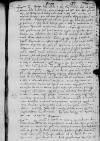Letter #2001
[Ioannes DANTISCUS] to [Sigismund I Jagiellon]Heilsberg (Lidzbark Warmiński), 1538-11-26
English register:
Dantiscus has received a letter from the King [Sigismund I Jagiellon]. He sent the letters addressed to the Royal Prussian voivodes immediately to the Bishop of Kulm (Chełmno) [Tiedemann Giese]. He promises to spare no effort to fulfil the King’s will.
Dantiscus denies the accusations put forward against him [in Queen Bona Sforza’s letter] that he decided by himself that the tax money should be kept at the Thorn (Toruń) Town Hall. He reminds the King of the relevant letter of the [Royal Prussian] Council dated October 9, 1537. As the first councillor, he is sometimes forced to pass the Council’s collegial decisions on to the King. He gives assurances of his respect for royal authority and rank.
Manuscript sources:
Prints:
| ||||||||||||||||||
Text & apparatus & commentary Plain text Text & commentary Text & apparatus
Serenissime etc.
Accepi cf.
cf.
Quod si ea de re, quae omnium consensu fit, mihi exprobrari culpaque impingi debeat soli, satius erit, ut me contineam, non tamen eam non curantiam rebus Serenissimae Maiestatis Vestrae commodo futuram existimo, cuius dignitatis ac auctoritatis tanta est apud me ratio atque existimatio, ut nulla de re in terris possit mihi esse maior, priusque meipsius obliviscar, quam tot in me collatorum beneficiorum Serenissimae Maiestatis Vestrae fieri umquam possim immemor, in eoque numquam mihi monitore opus erit, modo dominus Deus eandem Serenissimam Maiestatem Vestram nobis diutissime incolumem et superstitem conservet.
Quod a divina clementia, quantum totis eniti viribus possum, orare non desino Serenissimaeque Maiestati Vestrae eiusque solitae in me gratiae supplicissime me commendo.

 BCz, 245, p. 107
BCz, 245, p. 107